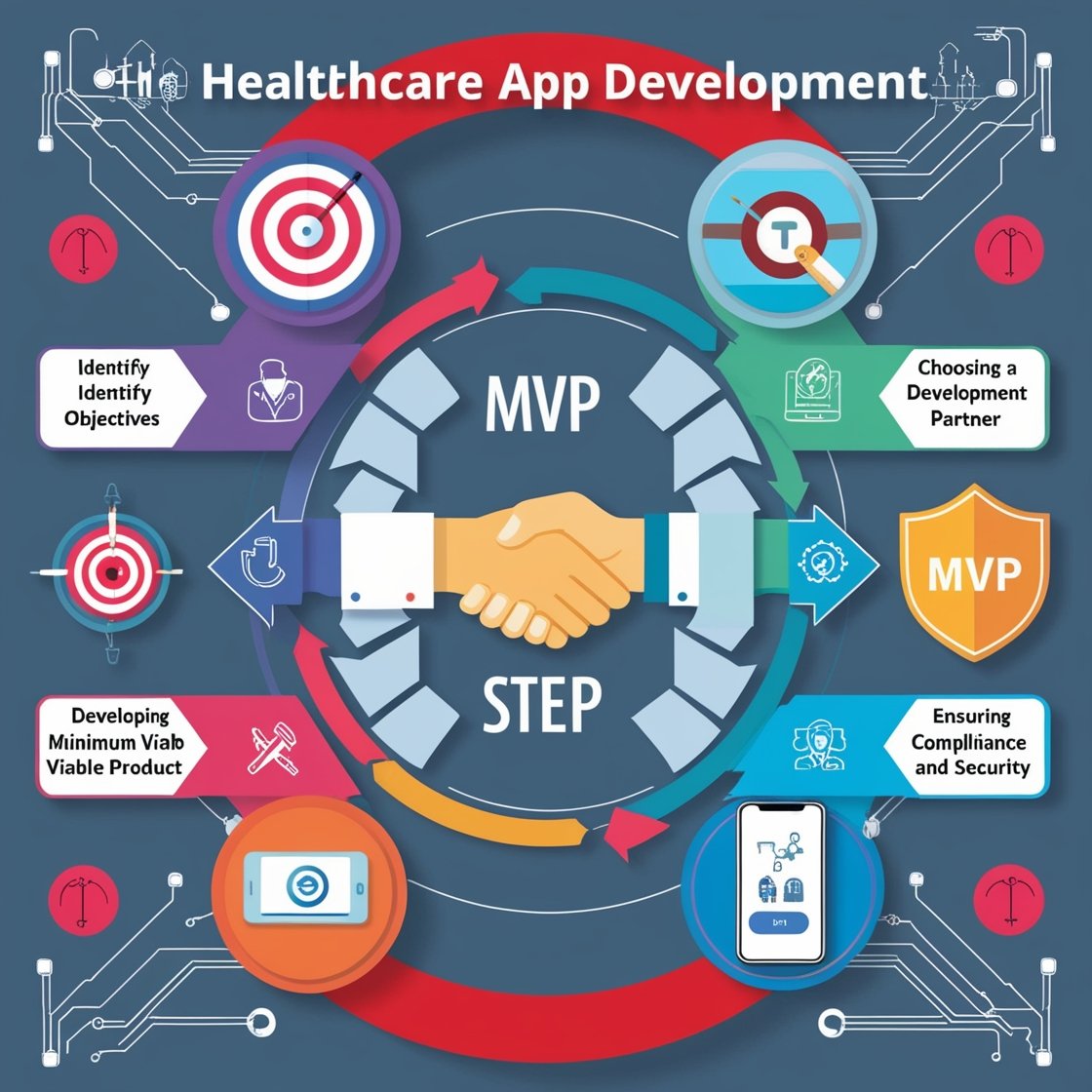6 Steps You Should Know About Healthcare App Development

As the healthcare industry continues to embrace digital transformation, the demand for mobile applications is skyrocketing. Healthcare apps are not only improving patient engagement but also enhancing the efficiency of medical services. If you’re considering developing a healthcare app, understanding the key steps in the development process is crucial. Here are four essential steps you should know about healthcare app development.
1. Identify Your Objectives and Target Audience
Before diving into development, it’s essential to clearly define your app’s objectives. What specific healthcare challenges do you aim to address? Are you looking to improve patient engagement, streamline appointment scheduling, or provide telemedicine services? Conduct thorough market research to understand your target audience’s needs and preferences. This step will help you identify the features that will resonate most with users and differentiate your app from competitors. For instance, if your app targets elderly patients, consider incorporating user-friendly interfaces and accessibility features.
Example: Apps like MySugr focus on diabetes management by providing tools for tracking blood sugar levels and medication reminders, catering specifically to the needs of diabetic patients.
2. Choose a Reputable Development Partner
Selecting the right development partner is critical for the success of your healthcare app. Look for a company with experience in healthcare software development and a proven track record of delivering similar projects.Evaluate potential partners based on their portfolio, technical expertise, and understanding of healthcare regulations such as HIPAA compliance. A reputable vendor will guide you through the development process, ensuring that your app meets industry standards while addressing user needs effectively.
Tip: Ask for references or case studies from previous clients to gauge their experience in developing healthcare applications.
3. Develop a Minimum Viable Product (MVP)
Creating a Minimum Viable Product (MVP) is an effective strategy for testing your app’s core functionalities before full-scale development. An MVP allows you to launch a simplified version of your app with essential features, enabling you to gather user feedback and validate your concept. Focus on building an MVP that addresses the primary pain points of your target audience. This iterative approach helps you refine your app based on real user experiences, reducing the risk of costly mistakes in later stages of development.
User Experience (UX) Considerations:
Ensure that your MVP prioritizes user experience. Conduct usability testing with real users to identify any pain points in navigation or functionality.
4. Ensure Compliance and Security
Healthcare apps deal with sensitive patient data, making compliance and security paramount. Familiarize yourself with relevant regulations such as HIPAA in the United States or GDPR in Europe, depending on your target market. Implement robust security measures, including data encryption, secure authentication processes, and regular security audits. Ensuring compliance not only protects patient information but also builds trust with users, which is crucial for the success of any healthcare application.
Technology Stack:
Consider using secure technologies that comply with industry standards for data protection. Frameworks like React Native or Flutter can help build secure applications while providing cross-platform capabilities.
5. Testing and Iteration
Once your MVP is live, continuous testing is vital to ensure functionality and security. Conduct both usability testing and security audits regularly to identify vulnerabilities and areas for improvement. Gather feedback from users to understand their experiences better and make necessary adjustments to enhance functionality and usability over time.
Example: Apps like Zocdoc regularly update their platforms based on user feedback to improve appointment scheduling features and enhance user satisfaction.
6. Future Trends in Healthcare App Development
As technology continues to evolve, so do consumer expectations in healthcare. Emerging trends such as Artificial Intelligence (AI) integration can personalize user interactions by offering tailored health recommendations based on usage patterns. Telehealth features are also becoming increasingly important as more patients seek remote consultations. Additionally, integrating wearable devices can provide real-time health monitoring, further enhancing patient engagement.
Conclusion
Developing a healthcare app involves careful planning and execution. By identifying clear objectives, choosing a reputable development partner, creating an MVP, ensuring compliance and security, conducting thorough testing, and staying informed about future trends, you can set your project up for success. As digital health continues to expand, investing in a well-thought-out healthcare application can lead to improved patient outcomes and enhanced operational efficiency.














